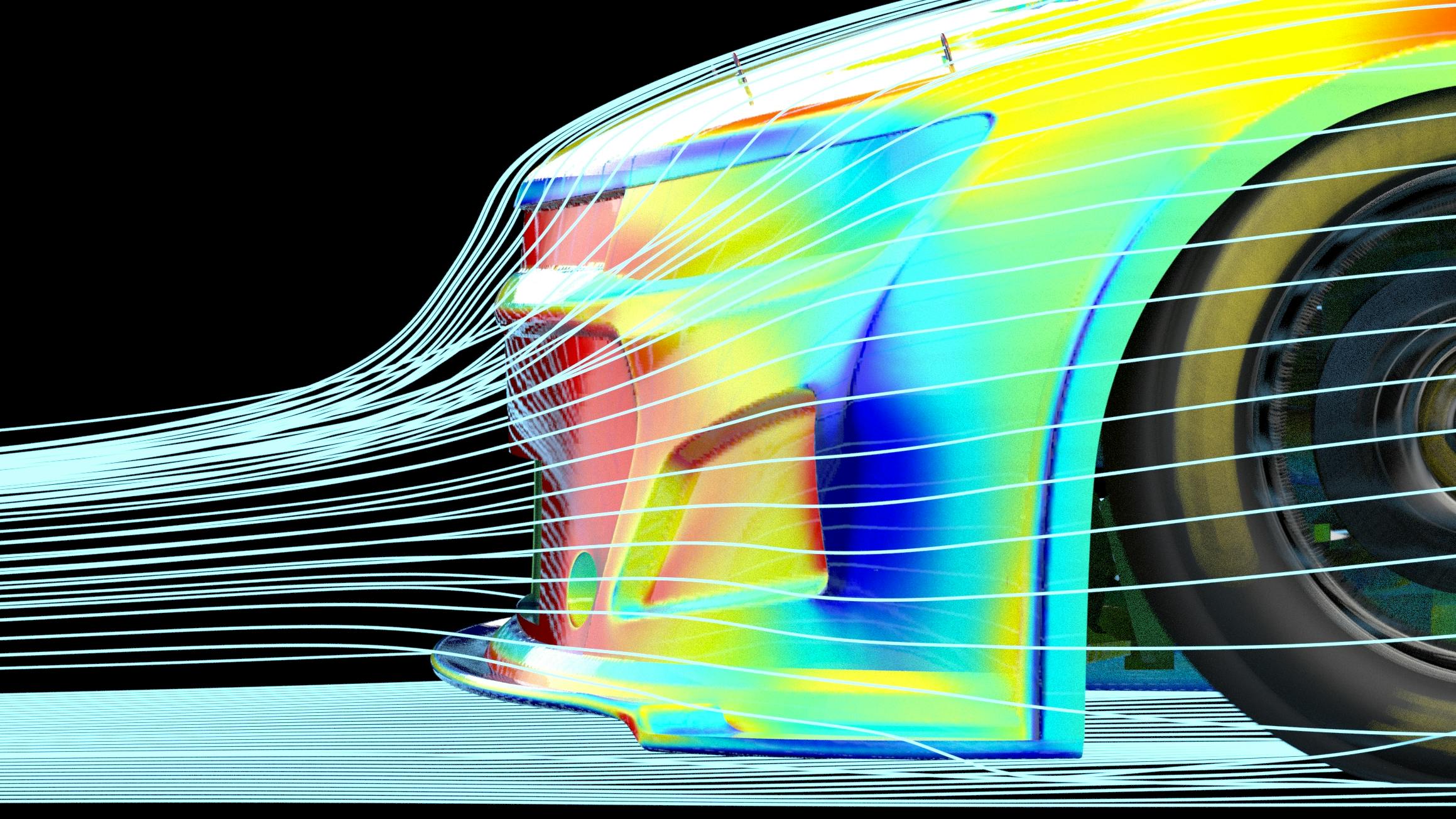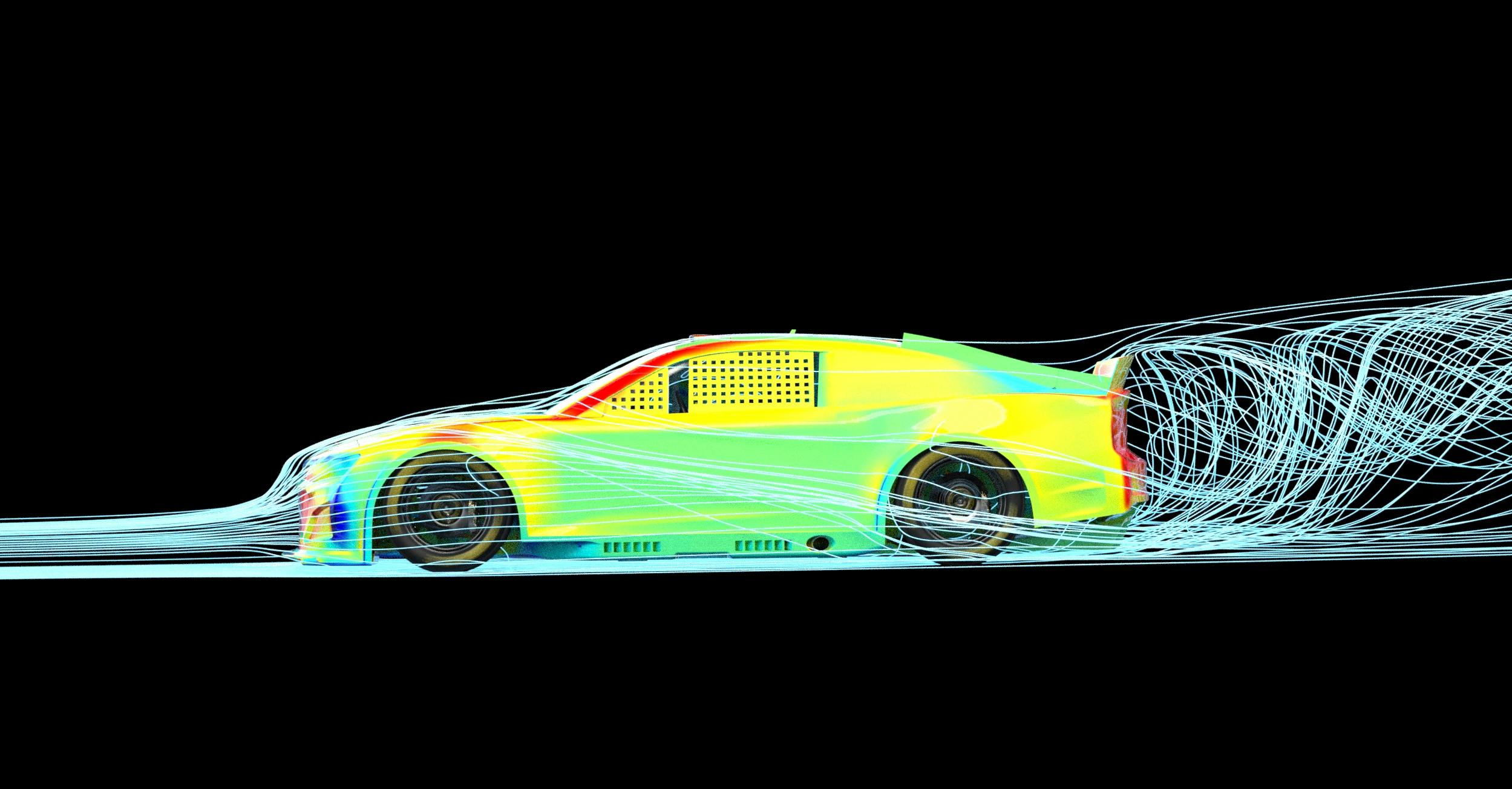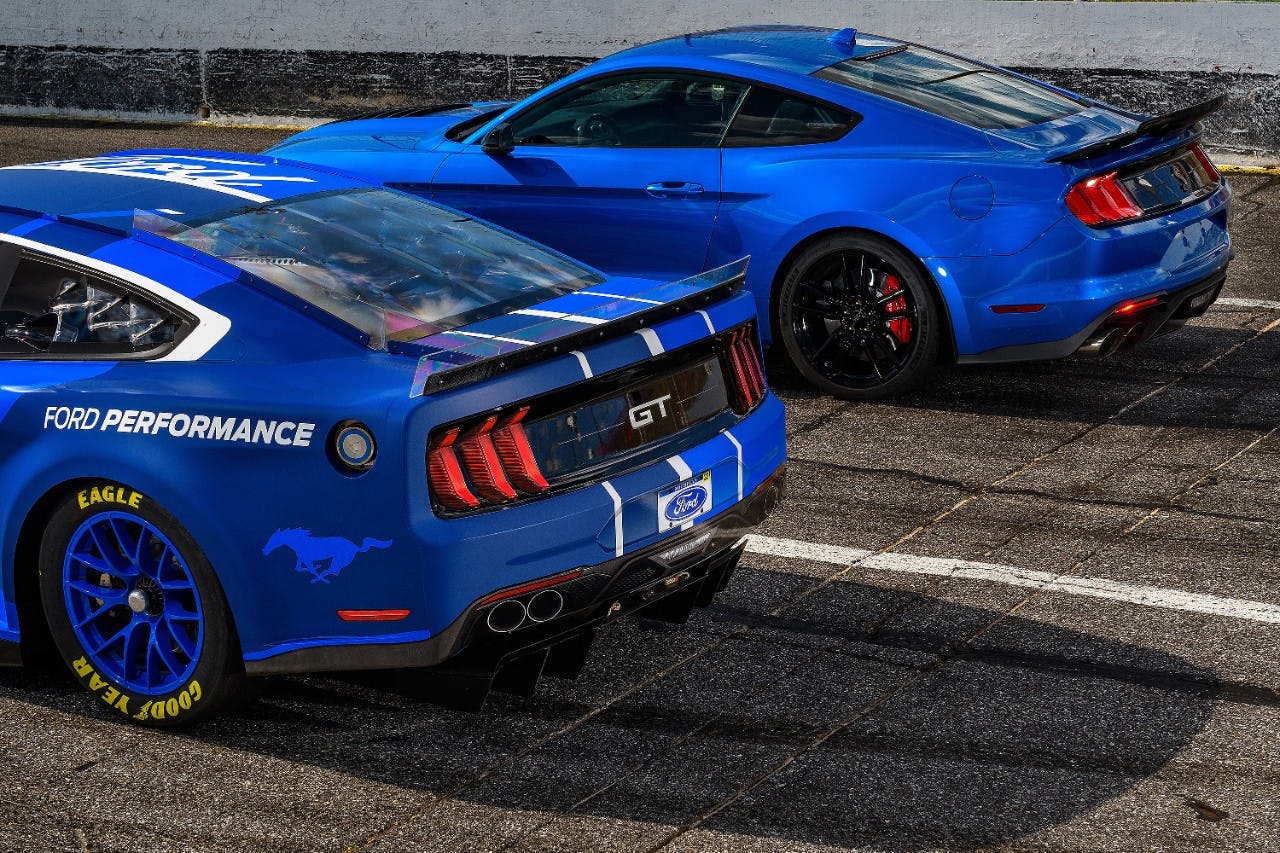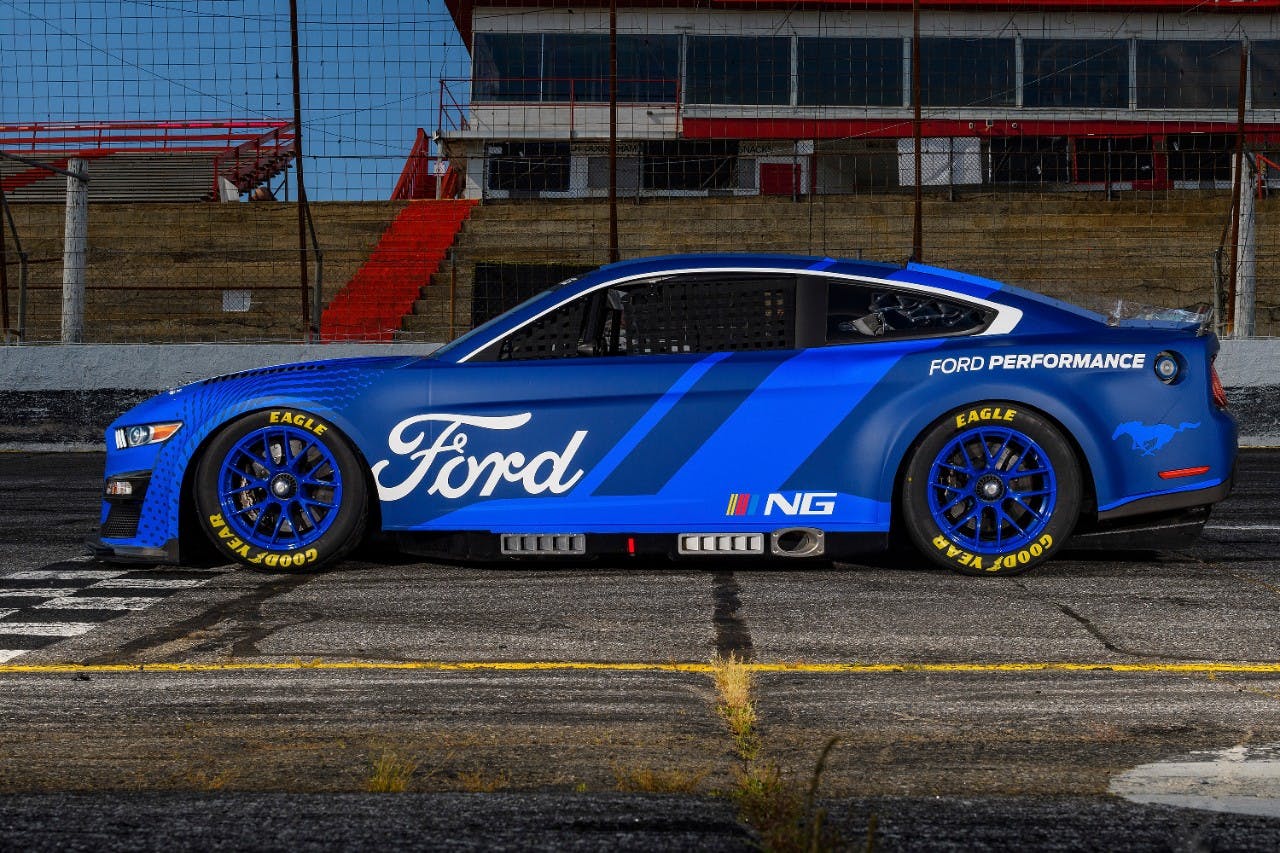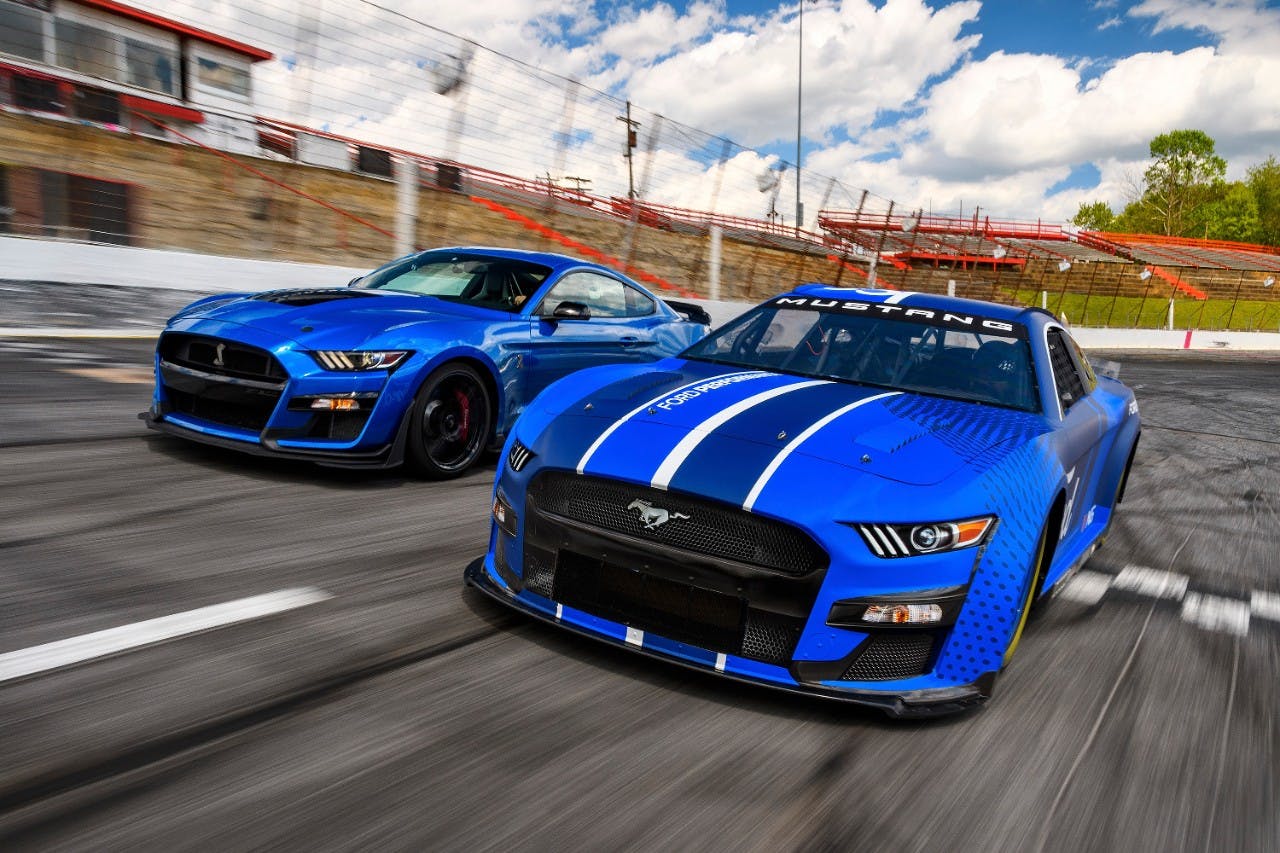NASCAR’s long-awaited Next Gen race car is a radical departure from tradition
Sequential shifter, single-lug wheels, rack-and-pinion steering, and independent rear suspension–NASCAR’s newest generation of race car has arrived, and with it, a bevy of firsts for North America’s premier stock car division.
The new “Next Gen” stock cars from each participating manufacturer (Chevrolet, Ford, Toyota) were unveiled to the public today in Charlotte, North Carolina. The latest generation is radically different from the cars campaigning in NASCAR’s Cup Series today. While manufacturers’ respective models remained the same, the Camaro, Mustang, and Camry that rolled on stage in Charlotte more closely resemble their production car counterparts. Greenhouses were lowered and decklids shortened to reflect the current styling prevalent in all three models. “We wanted to put the ‘stock’ back in stock car,” said NASCAR president Steve Phelps.
Cosmetics aside, the bodies are now composite, flange-fit units that will allow for more bumping and banging without cutting tires or inducing race-ending damage. The new bods are also symmetrical, which will omit the need for complex aero research surrounding skew and non-symmetrical body panels. A new, flat floor will hopefully cut R&D costs as well, while the diffuser out back will limit the amount of “dirty air” that trailing cars experience.

Mechanically, the new cars conform more closely to their production-spec counterparts by introducing rack-and-pinion steering and independent rear suspension. Also on the list of firsts, a five-speed sequential box replaces the old H-pattern shifter, and a new transaxle makes it debut, allowing for potential hybridization in future iterations. The brakes are larger and the fuel cell increases from 18 to 20 gallons.
With each generation, NASCAR designs its cars to be safer for the drivers. The Next Gen car will feature energy-absorbing foam bumpers tucked behind its front and rear fascias, and an additional roof flap to keep the car planted during spins.
The new car has been more than a year and a half in the making. Back in January of 2019, the Next Gen project began in the meeting rooms at NASCAR’s Research and Development Center in Concord, North Carolina, and by October of 2019 the first prototype made its first laps on track. NASCAR execs pointed to 2021 as the Next Gen’s debut. Throughout the fall and on into early 2020, NASCAR invited builders from each time to attend the sessions and experiment with various tire and aerodynamic configurations. In March 2020, we got our first look at a confirmed piece of the new car: the wheels. For the first time ever, NASCAR stock cars would utilize a center-locking lug nut rather than the multiple-lug patterned used since the series’ inception. BBS was announced as the manufacturer of the new 18-inch wheel.
Development came to a grinding halt in April 2020, as COVID-19 interfered with scheduled tests, ultimately causing NASCAR to delay the Next Gen’s release one year. Testing eventually resumed, and for the better part of the next year three different androgynous-looking prototypes circled tracks from Dover to Daytona, dialing in NASCAR’s newest stock car.
Unofficially, this is NASCAR’s seventh generation of car. Early generations were more-or-less “eras” and less “terms” with definite beginning and ending points, while NASCAR’s three most recent iterations (2007, 2013, and 2022, respectively) were joint efforts between the series, participating manufacturers, and drivers to develop a radically different car. That said, let’s bring you up to speed.

From NASCAR’s first stock-car race in the Daytona Beach sand until around 1964, the first-generation vehicles were largely stock-bodied cars riding on stock chassis, with little to no rules against which vehicles could participate. Hudsons, Studebakers, and a slew of other now-orphan manufacturers banged doors with Chevrolets, Fords, and Chryslers.

While mid-’60s NASCAR stock cars still looked, well, stock, their chassis became more modified with each passing year. Go-fast outfits like Holman-Moody began building purpose-built frames, while mechanics like Smokey Yunick and Junior Johnson exploited loopholes and wide margins in NASCAR’s rulebook. Manufacturers were equally innovative, building road-going aero kings like the Superbird, so that their slippery race car counterparts could dominate at tracks like Daytona and Talladega. NASCAR could hardly keep up, writing in new rules daily to keep competition close.
NASCAR’s third-generation stocker, starting in 1981, was marked by smaller, more uniform cars across all manufacturers. The 110-inch wheelbase, still used in today’s cars, became mandatory. Despite the decrease in size, the stock cars from this era experienced an unprecedented increase in speed, eventually necessitating carburetor restrictor plates at larger tracks in 1988 to cut into 200-plus-mph averages.
The fourth-generation change was ushered in with a dimmer, not a light switch. Buick left the series in 1993, Chevrolet replaced its Lumina with a Monte Carlo in 1995, Pontiac introduced a radically redesigned Grand Prix in 1996, Ford ditched the Thunderbird for its Taurus in 1998, and Dodge re-entered the sport in 2001 with their Intrepid. Every manufacturer had to adhere to common aero templates, and for that reason stickers and subtle body lines became the only way to distinguish between makes. The cars were sleek, low, and fast.
NASCAR Cup stock cars were reaching unfathomable speeds, even on intermediate 1.5-mile tracks. In 2007, in addition to welcoming Toyota to the series, NASCAR introduced its fifth-generation stock car, nicknamed the Car of Tomorrow. Working side-by-side with manufacturers, NASCAR developed a slower, safer car. The driver was moved toward the center of the vehicle and the greenhouse bubble was made larger for easier and expedited emergency evacuation. Cosmetically, NASCAR added a wing on the deck lid and shored up the contorted front and rear clips to reduce team’s dependency on aero. The cars were blocky and drove terribly. Kyle Busch, upon winning the first Car of Tomorrow race, remarked in his victory lane interview: “I’m still not a very big fan of these things. I can’t stand to drive them. They suck.”
NASCAR eventually deleted the racer-boy wing and front splitter, replacing it with a more conventional spoiler and front valence and in 2013, the series unveiled its sixth-generation stock car. Though the new car incorporated a lot of the mechanical elements developed in the Car of Tomorrow, cosmetically the new vehicle looked more like manufacturers’ showroom offerings, with deeper reliefs and more pronounced body lines. Chevrolet transitioned from the SS to the Camaro in 2018 and Ford made the jump from Fusion to Mustang in 2019, while Toyota utilized the Camry nameplate throughout.
With each generation, the goals for NASCAR have been the same: Make the cars safer, cheaper to build, and more competitive, all while satisfying manufacturers, drivers, and fans. It’s a nearly impossible endeavor, and never has the series nailed all three in the modern era. Could this be the generation that gets it all right? Let us know in the comments below.






















